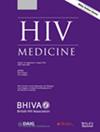Patients re-engaging with HIV care in Guatemala: Prioritizing CD4 counting and screening for histoplasmosis and tuberculosis
Abstract
Background
Discontinuation of antiretroviral therapy (ART) significantly contributes to the development of advanced HIV disease (AHD) and opportunistic infections. This study analyzed data from patients who re-engaged in care after ART interruption and compared the cohort with patients with newly diagnosed HIV, focusing on the burden of tuberculosis and histoplasmosis.
Methods
A diagnostic package for opportunistic infections was implemented in Guatemala in 2017, encompassing tuberculosis and histoplasmosis. From 2017 to 2019, we enrolled 1379 adults re-engaging in care and 3412 patients with newly diagnosed HIV across 13 healthcare facilities. Data collection included demographic information, laboratory test results, and patient outcomes.
Results
Among patients re-engaging in care, 54% (491 of 903) had AHD, which was comparable to the 50.1% (1349 of 2692) in newly diagnosed patients. Among the re-engaging cohort, 34.5% had not undergone CD4 testing, compared with 21.1% in the newly diagnosed group. This highlights a significant gap in assessing advanced HIV status through an objective, unbiased test. Among patients re-engaging in care, the incidence rates of tuberculosis and histoplasmosis were 9.7% and 8.3%, respectively, regardless of immune status. This indicated a high burden of opportunistic infections in this group, with newly diagnosed patients showing similar incidence rates of 8.5% for tuberculosis and 8.3% for histoplasmosis.
Conclusion
Patients re-engaging in care should follow a similar process to newly diagnosed patients. There is an urgent need for routine and immediate CD4 testing to identify AHD and implement the recommended comprehensive diagnostic and care package. Early detection and targeted interventions are crucial for reducing AIDS-related mortality.

 求助内容:
求助内容: 应助结果提醒方式:
应助结果提醒方式:


